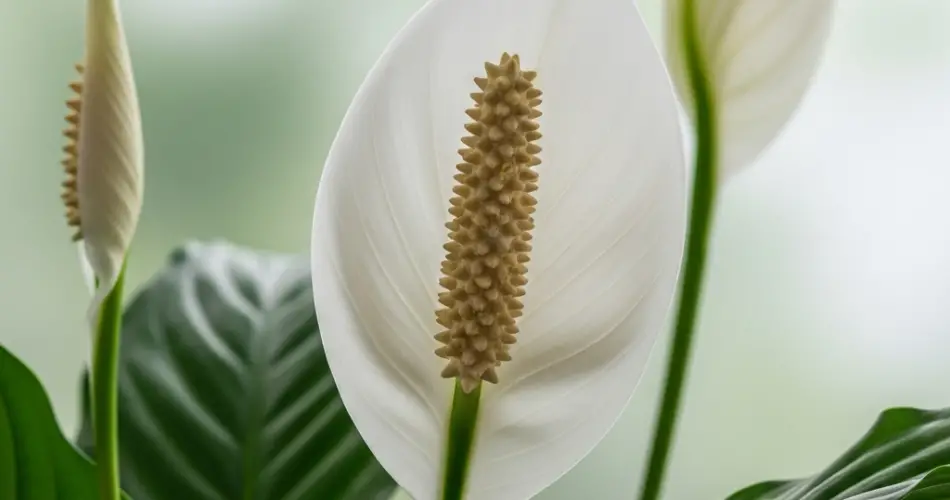The peace lily (Spathiphyllum) is one of the most beloved indoor plants thanks to its elegant white blooms and lush green foliage. Yet, many plant enthusiasts struggle to get their peace lilies to flower consistently—and some never see a single bloom at all. The truth is, with the right care, you can encourage your peace lily to bloom regularly, sometimes almost year-round, bringing beauty and fresh energy to your home.
If you want your peace lily to thrive and flower continuously, here are the essential care tips and secrets that few gardeners know.
Why Peace Lilies Sometimes Don’t Bloom
Before diving into care advice, it’s important to understand why your peace lily may not be flowering:
-
Insufficient light: Peace lilies need bright, indirect light to trigger blooms. Too little light means lots of leaves but few or no flowers.
-
Overwatering or underwatering: Both extremes stress the plant and prevent flowering.
-
Nutrient deficiencies: Lack of key nutrients, especially phosphorus and potassium, can inhibit flower development.
-
Improper temperature or humidity: Peace lilies thrive in warm, humid environments.
Understanding these common problems will help you correct your plant’s environment to encourage blooming.
1. Provide the Right Light Conditions
Peace lilies prefer bright but indirect light. Direct sunlight can scorch their leaves, while deep shade will stunt flowering.
-
Place your plant near a north or east-facing window where it receives filtered light.
-
If natural light is limited, consider using a grow light to supplement, especially during shorter winter days.
-
Rotate the plant every few days to ensure even light exposure and balanced growth.
2. Water Properly and Consistently
Watering is crucial for peace lily health and flowering:
-
Keep the soil consistently moist but not soggy.
-
Water the plant when the top inch of soil feels dry to the touch.
-
Use room temperature water to avoid shocking the roots.
-
Avoid letting the plant sit in standing water, as this can cause root rot.
-
If your home is dry, increase humidity by misting the leaves or placing the pot on a tray filled with water and pebbles.
3. Feed Your Peace Lily Regularly
Fertilizing supports healthy growth and flower production:
-
Use a balanced, liquid houseplant fertilizer diluted to half strength.
-
Apply fertilizer every 4-6 weeks during the growing season (spring and summer).
-
To promote blooming, switch to a fertilizer with a higher phosphorus content (the middle number in N-P-K ratios) during the early bloom phase.
-
Avoid overfertilizing, which can cause leaf burn and reduce flowering.
4. Maintain Ideal Temperature and Humidity
Peace lilies are tropical plants, so they thrive best in:
-
Temperatures between 18°C and 26°C (65°F to 80°F).
-
Avoid placing the plant near drafts, heaters, or air conditioners.
-
Aim for humidity levels above 50%. Use a humidifier if your indoor air is dry.
5. Repot When Necessary
If your peace lily has outgrown its pot or the soil has become compacted, repotting can encourage better root health and flowering:
-
Repot every 1-2 years in a pot 2-3 inches larger than the current one.
-
Use a well-draining potting mix formulated for houseplants.
-
Gently loosen the root ball before placing the plant in fresh soil.
6. Remove Spent Blooms and Yellow Leaves
To keep your peace lily blooming and healthy:
-
Regularly remove old flowers by cutting the flower stalk at the base.
-
Trim any yellow or damaged leaves to redirect energy to new growth.
-
This maintenance also helps prevent pests and diseases.
7. Control Pests Naturally
Peace lilies are generally pest-resistant but can occasionally suffer from:
-
Spider mites
-
Aphids
-
Mealybugs
Check your plant regularly, and if you spot pests, wipe the leaves with a damp cloth or use a gentle insecticidal soap.
Bonus Tip: Stress Your Plant Slightly
Interestingly, peace lilies sometimes respond to a bit of mild stress by producing more blooms. For example:
-
Allow the soil to dry slightly longer between waterings.
-
Slightly reduce feeding frequency for a short time.
Do this carefully, as too much stress can harm the plant.
Signs Your Peace Lily Is About to Bloom
With proper care, you’ll notice:
-
New leaves growing steadily.
-
Emergence of white or cream-colored flower spathes (the modified leaves surrounding the true flowers).
-
Healthy, glossy foliage.
Patience is key—some peace lilies bloom more readily than others depending on their age and variety.
Final Thoughts
A flourishing peace lily with beautiful white blooms is achievable with the right care. By providing the correct light, watering wisely, feeding properly, and maintaining ideal conditions, your plant can flower consistently and beautifully.
Whether you’re a beginner or an experienced indoor gardener, these tips will help your peace lily become a centerpiece of your home, adding elegance and a touch of nature’s calm all year long.



